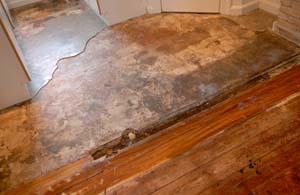Do's as well as Don'ts During Water Damage Emergencies.
Do's as well as Don'ts During Water Damage Emergencies.
Blog Article
Presented here in the next paragraph yow will discover additional wonderful resources around Simple Solutions To Preventing Fire And Water Damage To Your Home.

Water provides life, water breach on components where it's not supposed to be can result in damages. If the water saturates into your framework, it can peel away surfaces as well as erode the structure. Mold and mildew and mold likewise thrive in a wet atmosphere, which can be hazardous for your health. Residences with water damages scent moldy and old.
Water can originate from lots of sources such as typhoons, floodings, burst pipelines, leakages, and sewage system problems. In case you experience water damage, it would be great to know some safety preventative measures. Here are a couple of guidelines on just how to handle water damages.
Do Prioritize House Insurance Protection
Water damage from flooding dues to heavy winds is seasonal. You can additionally experience an unexpected flooding when a defective pipe unexpectedly bursts right into your residence. It would be best to have house insurance that covers both acts of God such as all-natural catastrophes, and also emergency situations like busted plumbing.
Do Not Neglect to Switch Off Utilities
In the event of a disaster, particularly if you reside in a flood-prone location, it would be a good idea to switch off the main electric circuit. This removes power to your whole house, protecting against electric shocks when water comes in as it is a conductor. Furthermore, do not neglect to turn off the main water line valve. Furnishings will certainly relocate about and also create damages when floodwaters are high. Having the major shutoff shut down prevents further damage.
Do Stay Proactive and Heed Weather Alerts
Storm floodings can be really uncertain. If there is a background of flooding in your area, remain positive and prepared. If you live near a creek, river, or lake, pay attention to evacuation warnings. Take out prized possessions from the first stage as well as basement, after that put them on the greatest possible level. Doing so lowers prospective residential property damage.
Don't Disregard the Roofing System
Before the climate turns shocking, ensure you have a roof covering evaluation. It would certainly be prudent to get this service yearly as it can minimize complex problems. You can stay clear of rain damages if there are no openings and leakages in your roof. Your roofing professional will certainly also deal with damaged gutters or any other indications of weakening. This will certainly prevent water from streaming down your wall surfaces and also saturating your ceiling.
Do Pay Attention to Little Leaks
A ruptured pipe doesn't occur overnight. You may notice gurgling paint, peeling off wallpaper, water streaks, water stains, or dripping audios behind the wall surfaces. Have your plumbing repaired before it results in massive damages.
Don't Panic in Case of a Burst Pipeline
When it comes to water damage, timing is key. Therefore, if a pipeline bursts in your residence, quickly shut off your main water valve to cut off the resource. Call a trustworthy water damage restoration professional for aid.
Water gives life, water invasion on components where it's not supposed to be can result in damage. Houses with water damages smell moldy as well as old.
Water damages from flood dues to hefty winds is seasonal. You might notice bubbling paint, peeling wallpaper, water touches, water spots, or trickling sounds behind the walls. When it comes to water damages, timing is crucial.
Some Do's & Don't When Dealing with a Water Damage
DO:
Make sure the water source has been eliminated. Contact a plumber if needed. Turn off circuit breakers supplying electricity to wet areas and unplug any electronics that are on wet carpet or surfaces Remove small furniture items Remove as much excess water as possible by mopping or blotting; Use WHITE towels to blot wet carpeting Wipe water from wooden furniture after removing anything on it Remove and prop up wet upholstery cushions for even drying (check for any bleeding) Pin up curtains or furniture skirts if needed Place aluminum foil, saucers or wood blocks between furniture legs and wet carpet Turn on air conditioning for maximum drying in winter and open windows in the summer Open any drawers and cabinets affected for complete drying but do not force them open Remove any valuable art objects or paintings to a safe, dry place Open any suitcases or luggage that may have been affected to dry, preferably in sunlight Hang any fur or leather goods to dry at room temperature Punch small holes in sagging ceilings to relieve trapped water (don't forget to place pans beneath!); however, if the ceiling is sagging extremely low, stay out of the room and we'll take care of it DO NOT:
Leave wet fabrics in place; dry them as soon as possible Leave books, magazines or any other colored items on wet carpets or floor Use your household vacuum to remove water Use TV's or other electronics/appliances while standing on wet carpets or floors; especially not on wet concrete floors Turn on ceiling fixtures if the ceiling is wet Turn your heat up, unless instructed otherwise

As a devoted reader about Reducing Your Risk Of Water And Fire Damage At Home, I thought sharing that information was important. Sharing is nice. Helping people is fun. Thanks a lot for going through it.
Report this page